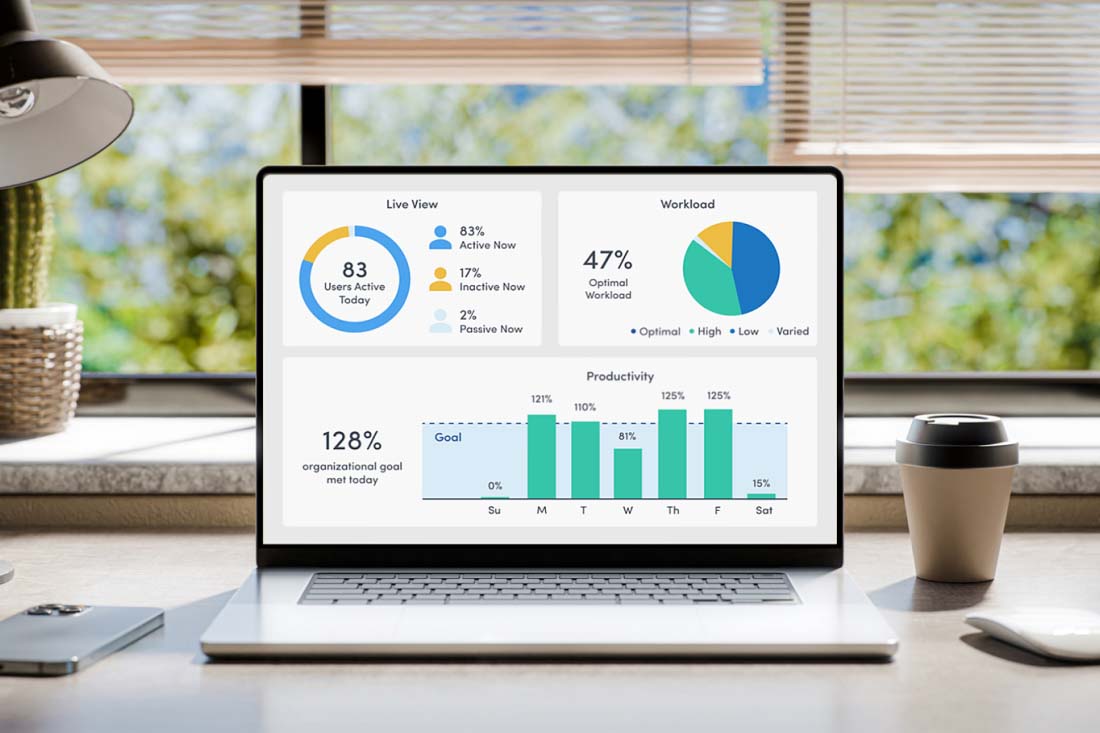Productivity is the measurement of how much work employees are able to do, and how well they’re able to do that work. Many things have an impact on productivity — including work environment, employee morale and company processes. Improving productivity is often a main goal for company leaders, and finding new tools to increase employee productivity is a top priority.
For both remote workers and in-house teams, technology can improve productivity for employees by offering better collaboration, communication and time-saving tools. But as organizations add new technologies without measuring their impact, teams may be using tools they don’t need or actually may hinder employee productivity.
In this post, we’ll discuss how technology affects productivity and how to measure its impact.
Is new technology making us more productive?
Organizations introduce new technology into the workplace to try to increase employee productivity while reducing errors, speeding up timelines and reducing stress for workers. Cloud-based tech has already impacted organizations’ ability to work from anywhere – including on mobile devices. Technologies like artificial intelligence (AI) are predicted to have major impacts on industries and businesses in the next decade.
However, some researchers argue that technology isn’t living up to its promise of making employees more productive. New technology can be a drain on team members, especially if it’s not intuitive. In fact, some new technologies, like social media, can distract employees when not implemented properly. The worst case scenario is that employees try to avoid using the very technology that leadership has spent valuable time and money finding to make their jobs easier.
So how technology affects productivity isn’t always cut and dry. Some organizations may find technology increases productivity, though tools that are distracting or not intuitive may actually hinder productivity. The only true way to know is by implementing something and measuring its impact.
3 ways technology can improve productivity
If boosting productivity is a goal of your organization, technology is probably the first place you turn. Here are a few ways technology can boost productivity within your organization:
1. Automation and time-saving tools
Perhaps the biggest way that technology can improve productivity is through time-saving tools. This is especially evident with automation. By taking mundane or repetitive tasks out of the hands of employees, you can free them up to do more creative work.
Time-saving tools can also help employees get their work done more quickly, which is an obvious boon to productivity. This can, in turn, help with employee engagement, which can boost morale and feed back into the productivity loop.
2. Improved communication and collaboration tools
With employees spread out all over the map in remote environments or even within a single office, communication and collaboration are keys to productivity. Technology can help employees stay connected by making it easy to communicate, regardless of where employees are located. The right tools can help track projects and streamline task management between employees to prevent bottlenecks that create timeline delays. Communication and collaboration tools can also help managers better track employee sentiment, helping to find the cause of employee morale issues and fix problems to keep employees engaged.
3. Increased accessibility
Accessible work tools improve the work environment by allowing all employees to get their work done more efficiently. In fact, increased accessibility from new technology is helping create employment opportunities for people who have been left out of the workforce in the past.
All employees can benefit from the ability to access work tools from the cloud and to do simple tasks from their mobile devices. Remote and hybrid employees are more productive when they can access their work easily from anywhere, while the company can rely on new technology to maintain security and data protection at the same time.
Measuring the impact of technology on productivity
Determining if new technology is working for your organization starts with tracking productivity by collecting the right data. You have to dig beyond simple time tracking to see how employees are doing, although knowing where they’re spending their time is a good start. You also need to be able to compare productivity data across time, and against tangible goals.
Knowing how technology impacts productivity in your organization can allow you to create employee engagement strategies to improve productivity. By setting specific goals for productivity and knowing which new technologies lead there, you can convert disengaged employees to highly engaged employees and ensure they’re equipped to do their best work.
Increase productivity with ActivTrak’s productivity solutions
New technology can increase productivity if it’s implemented correctly and measured across time, but doing so requires the right tools and the knowledge of how to analyze their usage.
Find out where your tools are working for your team – and where they aren’t – with ActivTrak’s productivity solutions. ActivTrak gives you tools to measure productivity and to see how new technologies are working for you. Get workforce analytics and productivity dashboards to understand how your employees are doing based on real data.
Schedule a free demo today.





